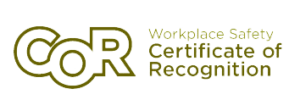When you run a business that deals with food, your kitchen equipment is the heart of your success!
From choosing the right equipment to maintaining its functionality, there is a lot to consider when it comes to setting up your industrial kitchen.
In fact, regular maintenance is key to reducing costs and ensuring an amazing customer experience.
To help you get started with your new commercial kitchen, you can trust Advantage Refrigeration, your commercial refrigeration experts in Edmonton, to walk you through the setup process:
Different Options for Commercial Refrigeration
You can choose various types of commercial refrigeration equipment for your business, and each piece has a different function.
Some of the recommended options for commercial refrigeration include:
- Refrigerated display cases
- Drop-in coolers
- Undercounter refrigerators
- Draft beer systems
- Deli cases
However, no matter the option of commercial refrigeration you choose, there are three main types that you should be familiar with:
- Coolers: Coolers are a type of refrigeration unit that keep food and beverages below the average room temperature and above freezing. This prevents your perishable items from spoiling.
- Freezers: On the other hand, freezers keep your perishable items frozen to prevent them from spoiling or preserving products for future use.
- Combination Units: When it comes to commercial refrigeration solutions, you can opt for a unit that both chills and freezes perishable items.
Choosing the Best Commercial Refrigeration Equipment for Your Kitchen
The first step in choosing the best commercial refrigeration equipment for your kitchen is to consider the size.
For example, walk-in coolers come in a wide range of sizes, floor plans, and configurations, making it easy to find one to suit your business’s space.
As a good rule of thumb, you should have 1 cubic foot of space for every 28 pounds of food.
You should also pay attention to energy efficiency to save your business money in the long run. Doing so will also reduce the strain on the refrigeration system and prolong its lifespan.
Lastly, consider choosing a unit with a warranty, paying attention to how long the unit is protected and specific requirements that must be met to be eligible for warranty repairs.
How Do You Set Up a Commercial Refrigerator?

Properly organizing your commercial refrigerator can increase productivity, prevent hot spots, improve cleanliness, and ensure food safety.
Here are the steps you should take to set up your commercial refrigerator:
Label the Shelves
To keep everything in your commercial refrigerator organized, label the shelves. This will make it easier for employees to identify and access products.
Space Food Adequately
If you are storing food items in bulk, it’s important to make sure there is enough space between products to allow cool air to circulate.
Having better circulation means that your food stays appropriately cool and reduces hot spots inside your cooler and freezer.
The same goes for prepped foods in pans and containers. There should be around 3-6 inches of space between the wall and your food items and between your food items.
Don’t Place Items On the Floor
Placing food items on the floor of your commercial refrigeration unit is unsafe and unsanitary, whether they are stored in containers or not.
Items should be stored at least six inches off the floor in order to prevent contact with dirty floors and infestations.
Doing so will also eliminate any tripping hazards and prevent injuries.
Store Meat on the Lowest Shelves
Storing meat on the lowest shelves of your commercial refrigerator to prevent spills and leaks from thawing products. The juices from thawing meat can contaminate other food products in your cooler.
Any spills will simply end up on the floor, where you can easily mop them up.
Store Produce Away From the Fans
The fans inside your commercial refrigerator can damage any food items stored near it, such as berries and fresh greens.
Fresh produce should be stored away from the fan and vents in sealed containers to maintain their freshness and quality.
In your freezer, storing items too close to the fan can also cause freezer burn.
Pay Attention to Shelf-Life
Pay attention to expiration dates and use-by dates by ensuring items are properly labeled before being placed in your commercial refrigerator.
Place newer items toward the back and slide older items forward. This will ensure that older items are used first before they expire.
This will help save you on food costs and prevent health issues related to spoiled or expired food.
How to Set Up an Industrial Kitchen
Your commercial refrigerator is only one part of your industrial kitchen. The layout and design of your kitchen are essential to its functionality and operation.
While it takes careful planning to set up an industrial kitchen, here are some steps to get you started:
1. Start With Refrigeration
The first purchase you should make for your industrial kitchen is your commercial refrigeration equipment. The type of unit you will need (cooler, freezer, or combination) will depend on the size and nature of your business.
Speaking to a professional HVAC contractor is a great way to determine what equipment will best suit your space.
2. Consider Supplemental Refrigeration Units
Depending on your business type, you may need supplemental refrigeration units such as refrigerated line stations to keep prepared foods cool before prep and service.
You may also need additional units like the ones mentioned above, such as a beer system and refrigerated display cases.
3. Storage
Now that keeping your food cool is taken care of, it’s time to look at storage. Shelving units are necessary to store non-refrigerated food items, smaller pieces of equipment, and cooking tools.
4. Cooking Equipment
Your industrial kitchen will also need cooking equipment, including an industrial range hood and HVAC installation system if you plan on installing a stovetop or broiler.
The type of cooking equipment you choose will depend on the food you plan to cook. For example, broilers and open flames are used to grill meat, while steamers are used for vegetables.
Additional cooking equipment includes deep fryers, flat grills, and convection ovens.
You may also want to consider installing a salamander, which sits over the range burner and keeps plated food hot prior to service.
5. Install Food Prep Stations
Stainless steel prep tables are essential for preparing food in an industrial kitchen. They provide ample space and are easy to clean, making them safe and sanitary.
6. Specialty Equipment
Consider any special equipment you may require for your business, such as a meat slicer, food processor, or industrial-sized mixer.
7. Fire and Safety Equipment
Install sprinkler systems and fire extinguishers. These are required by local fire department regulations.
8. Sanitization Stations
Lastly, you will need sanitization stations for your industrial kitchen. These include triple-sink wash stations and commercial dishwashing units to ensure all dishes are properly washed and sanitized.
Properly Maintaining Your Commercial Refrigeration

After finding the perfect commercial refrigeration equipment and setting up your industrial kitchen, regular maintenance is vital to prolonging the lifespan of your appliances.
When it comes to commercial refrigeration, whether you have a cooler, freezer, or combination unit, here are essential tips to keep your equipment running for years to come:
Door Seals
Perhaps one of the most troublesome failures of a commercial refrigeration unit are issues caused by faulty door seals. This is why it is imperative that you check your door seals regularly.
You can do this by placing a dollar bill in the doorframe and closing the door with part of the bill sticking out. If you can pull the bill out, your door seals may be in need of repair.
You should also give your door seals a good clean every six months to prevent food bits from tampering with the seal.
Thermostat
Commercial refrigeration breakdowns are often caused by broken thermostats. Not only does this lead to costly repair bills but spoiled food costs as well.
You can avoid this nightmare by regularly checking the temperature of your units by using a thermometer. Check the owner’s manual to verify the working temperature of your equipment and compare it to the thermostat readings.
Condenser Coils
If you can, ensure that your condenser coils are clean or have them inspected regularly by a professional HVAC technician.
To clean the condenser coils, unplug the unit so you can access the coils. Use a vacuum cleaner with a brush attachment gently over the coils to remove dust and debris.
If necessary, use a cloth to wipe off dust and dirt. Replace the unit and plug it back in.
This should be done at least twice a year.
Keep Your Fridge Stocked
In order to work properly, many commercial refrigerators need to be kept nearly full. This creates the proper thermal mass to maintain a stable temperature.
The emptier your unit is, the more the temperature is impacted every time it is opened since the cooling unit has to work harder.
If you don’t have enough product to fill your fridge, use jugs of water.
Regular Cleaning
Keeping your commercial refrigerator clean does more for your equipment than keeping up with appearances. Be sure to thoroughly clean your unit as part of your regular maintenance schedule.
Commercial Refrigeration Troubleshooting Tips
If you regularly maintain your commercial refrigeration equipment and are still running into problems, here are some troubleshooting tips:
No Power
When your commercial refrigerator has no power, or quits overnight, start by checking the power switch. This may seem like an obvious troubleshooting step but it’s a very common issue!
Also, be sure to check the power cord to see if it is unplugged or damaged. If your cord is frayed or split, replace it immediately.
A blown fuse or tripped circuit can also prevent your unit from operating. Check the fuse box.
The Unit is Too Warm
There are multiple reasons why your refrigerator may be too warm:
- Your unit is too close to the wall and air cannot circulate.
- The condenser coils are dirty.
- The door gasket is broken and allowing cool air to escape.
- The door hinges are damaged and causing the door to remain open.
- The thermostat isn’t working properly. Check to make sure it is not blocked.
The Unit is Too Cold
You wouldn’t think a refrigerator or freezer could be too cold, but it’s possible! Check for these issues:
- Too much ice buildup can throw off your unit’s cycles. Check to see if the defrost timer needs to be replaced.
- Frozen coils can affect your unit’s pressure and may need to be inspected by an authorized technician.
Compressor Issues
The compressor moves refrigerant through your unit and can run into common problems such as noise and dirt buildup.
If your compressor is noisier than a soft hum, this could be a sign of failure, and the part may need to be replaced.
Although it’s rare, the compressor can become too dirty to operate. You should try to clean your compressor at least three times a year.
Evaporator Fan
A common issue with evaporator fans can be attributed to dirty or frozen evaporator coils.
These coils can be easily cleaned, but if they are frozen solid, you will have to call a professional HVAC technician.
Evaporator fans can also break or make a loud noise if the motor is damaged.
Leaks
You may face a clogged drain hose or a full evaporator pan whenever there is excessive water in the unit or on the floor surrounding it.
Check to see if the evaporator pan is overfilling with water. If not, check the drain hose.
Commercial Refrigeration Edmonton
Having a reliable supplier to install and service your commercial refrigeration equipment is crucial when it comes to running a restaurant, hotel, or any food-related service.
Our refrigeration specialists at Advantage Refrigeration maintain and service your commercial and industrial refrigeration systems!
We can provide one-off repairs or a maintenance agreement to suit your budget and schedule, including 24/7 emergency service for commercial refrigeration repair in Edmonton.
We’ve got you covered! Contact us today for more information.






















